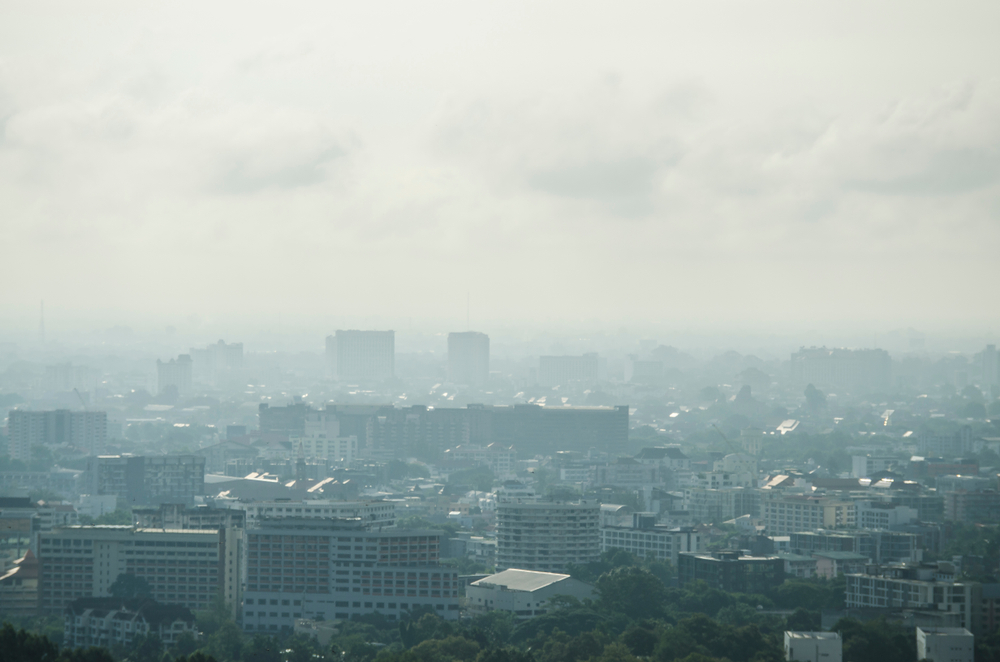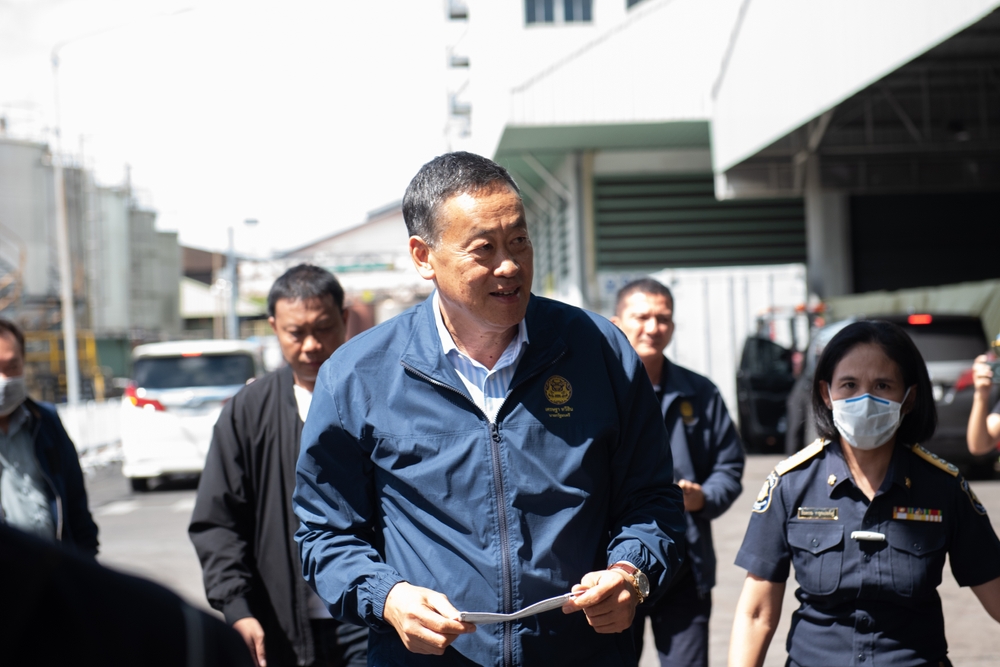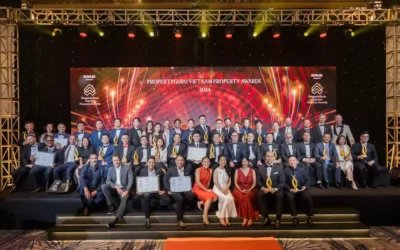How air pollution is driving a real estate transformation in Chiang Mai
Thailand’s persistent problems with polluted air—especially bad in the northern city of Chiang Mai—are prompting calls for tougher government action and a shift in developer practices to mitigate the crisis

Chiang Mai is one of the undisputed jewels in Thailand’s tourism crown. On the doorstep of some of the country’s most stunning nature, the idyllic northern city beckons visitors with its laidback blend of ancient temples, legendary Lanna cuisine, and lively arts and music scene.
But then March rolls around, and the smog rolls in. Every year, for about two months, Chiang Mai is shrouded in pollution, driving tourists away while long-suffering residents endure the poor living conditions. This pollution is exacerbated by the city’s location in a valley, which traps the smoke from agricultural burning in the region.
The city recorded the world’s worst air quality for several consecutive days this year. Levels of PM2.5 pollutants—fine particles small enough to enter the bloodstream through the lungs—frequently surpassed 220, 20 times higher than World Health Organisation guidelines.
The Thai capital Bangkok also suffered from severe pollution in February and March, prompting Prime Minister Srettha Thavisin to issue stay-at-home warnings to government staff and the wider public.
“These figures—PM2.5 and PM10—sound innocuous but most people don’t realise that these are minuscule particles that are impossible not to inhale,” built environment expert John Herbert told The Telegraph in April. “If you’re exposed to these levels longterm, or even for a few months, you’re going to face serious respiratory disorders and possible hospitalisation.”
Buyers are starting to consider the longterm negative effects of air pollution, especially concerning their families’ health
Indeed, recent data released by Thailand’s Health Ministry revealed that an estimated 10.5 million people in the country suffered from diseases related to air pollution in 2023.
And yet, this is by no means a recent phenomenon. It is almost as if a collective amnesia takes hold of officials for another nine or so months. Despite strong statements on tackling the pollution, Srettha declined to designate Chiang Mai as a disaster area to protect the country’s tourism sector. In an online announcement, he said the designation would “affect the number of foreign tourists when tourism has just recovered in the wake of COVID-19.”
The recurring pollution crisis doesn’t only affect public health and tourism; it also casts a long shadow over real estate markets. While there’s no clear correlation between the direct impact of air pollution on Bangkok and Chiang Mai’s real estate markets, there is growing caution among investors, who are increasingly looking at less polluted areas such as Mae Hong Son, Phayao, and Chiang Rai for development, according to real estate analyst and PropertyGuru Asia Property Awards judge Marciano Birjmohun.

“Buyers are starting to consider the long-term negative effects of air pollution, especially concerning their families’ health,” he says. “Although government policies have so far been ineffective in significantly mitigating pollution, developers are responding by incorporating green features and sustainable practices in their projects.”
Innovations such as air filtration systems, smart building technologies for real-time air quality monitoring, and biophilic design principles are becoming more prevalent. These efforts aim to address the immediate impact of poor air quality and enhance the overall attractiveness and healthfulness of urban living environments. Still, Birjmohun notes that “the lack of strong regulations to address the root causes, like industrial emissions and agricultural burning, remains a cause for concern.”
Another significant issue is the lack of sustainability data. Unlike North America and Europe where sustainability is closely managed by governments, in Asia, there is little understanding of key metrics outside of Singapore and a few other gateway markets. This gap makes it challenging to address investor sentiment and promote environmental compliance.
“Typically, in the West, listed groups have compliance initiatives, and large private equity groups investing in larger projects have environmental mandates,” says Bill Barnett, founder and managing director of Asia-based consultancy C9 Hotelworks. “This is not the case for most of Thailand’s real estate developers, though there are some notable exceptions like the Minor Group. It’s a work in progress, but the problem is a clear and present danger to urban residential health and tourism alike.”
The economic cost of pollution to Thailand is substantial, encompassing health-associated risks and impacts on insurers. These costs represent a significant, often overlooked issue. Additionally, attracting international investors, particularly from the West, who require high levels of compliance and a robust regulatory environment, poses a further challenge. Ignoring the growing pollution problem risks lagging economic growth and deterring potential investors.
Addressing these issues requires both government intervention and a shift in developer practices. Barnett advocates for making an economic case for sustainability by highlighting energy savings, procuring local materials for carbon credits, and educating developers on how sustainability can enhance asset value versus the misconception that it’s costlier.
“Challenges can become more prevailing, and they have to come with innovation and sustainability frameworks to improve the air quality in and around their developments,” he adds. “Forward-looking developers do not maximise their gross floor area anymore but rather offer a higher ratio of green area to commit to a healthier path of sustainability.
“On the construction and engineering side, more buildings invest in air filtration systems on a macro level, and additionally offer custom air quality devices in individual units.”
As the annual haze continues to consume Chiang Mai and Bangkok, it’s clear that bold measures are needed. The inaction of the past must give way to collaborative efforts between the government and private sector, driven by the increasing demand for wellness in investments. This can help turn the tide, ensuring these cities are once again vibrant and healthy places to live and invest in.
The original version of this article appeared in PropertyGuru Property Report Magazine Issue No. 185 on issuu and Magzter. Write to our editors at [email protected].
Recommended
Inside Asia’s luxury resort residences that are redefining high-end living
Asia’s resort residence market is witnessing a shift as investors eye larger, multifunctional units
How joining BRICS could give Thailand and Malaysia a new economic edge
Thailand and Malaysia are eyeing membership in the bloc of emerging nations
How Modi’s real estate reforms are transforming India’s housing market – and what’s next
A coalition led by the strongman prime minister Narendra Modi is looking to consolidate gains in the property market
Why Japan’s new interest rates might spark a transformation in Niseko’s property market
A new era for Niseko’s wintry property market dawns with the sunset of Japan’s negative rates regime








